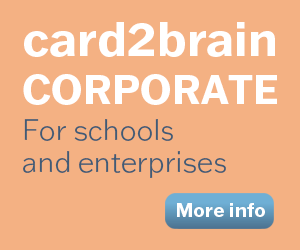ACCA Financial Management
ACCA Financial Management
ACCA Financial Management
Set of flashcards Details
| Flashcards | 157 |
|---|---|
| Language | Deutsch |
| Category | Finance |
| Level | Other |
| Created / Updated | 25.08.2025 / 25.08.2025 |
| Weblink |
https://card2brain.ch/cards/20250825_acca_financial_management?max=40&offset=80
|
| Embed |
<iframe src="https://card2brain.ch/box/20250825_acca_financial_management/embed" width="780" height="150" scrolling="no" frameborder="0"></iframe>
|
How can a change in working capital impact ROCE?
Working Capital (Inventory + acc. receivable - acc. payable) are part of Capital Employed (Asset- Liabilities)
If WC is reduced/optimized, CE will reduce which will increase ROCE
What are the two objectives of working capital management? why is there a trade-off?
- enough liquidity
- increased profitability
High Investment in WC = more liquidity, but less profitable (less efficient).
Less investment in WC = less liquidity but more profitable
explain the 3 risk levels in working capital management:
- moderate risk level
- agressive strategy
- conservative strategy
- moderate risk level
- matching policy
- "permanent" current assets should be financed by long-term finance
- fluctuating portion by short-term finance
- agressive strategy
- short-term finance for ALL current assets
- conservative strategy
- long-term finance for ALL current assets
Short-term finance instruments to fund current liabilities
- Bank Overdraft
- expensive but flexible
- variable interest rate!
- repayable on demand
- short-term loans
- lower IR than LT debt (less risky) unless inverted yield curve
- accounts payable
- cheap but loosing settlement discounts is expensive
- lost goodwill with suppliers
- disappearance of trade credit (when too much credit is taken)
long-term finance instruments for current assets
- Deb
- loan note issues
- long-term bank loans
- if IR are fixed, not affected by rising rates
- Equity
- new shares issued/
- Retained Profits
- no legal commitment to repay
Cash Operating Cycle
Period between paying suppliers and receiving cash from customers
Inventory holding period + receivable collection period - payable payment period
what is part of inventory holding period and how to calculate it?
- finished goods holding period = finished goods inventory / COS * 365
- WIP production period = WIP / COS * 365
- Raw materials holding period = raw materials inventory / raw materials purchases * 365
how to treat warehouse rental in calculating the EOQ (Economic Order Quantity)
Double (2x) the floor space requird for each unit
(the warehouse must be large enough for max. capacity)
how to treat Cost of capital / finance cost in calculating the EOQ (Economic Order Quantity)
finance cost is added to holding cost
how to decide if discount is worth it, using EOQ (Economic Order Quantity)
- calculate EOQ
- calculate Annual Cost with EOQ
- Annual cost = Holding Cost + Ordering cost + purchase cost
- Holding costs = x/2 * Ch
- Ordering Costs = D/x * Co (demand divided by EOQ = amount of orders)
- Purchase price for all necessary quanitites = Pp*D
- Annual cost = Holding Cost + Ordering cost + purchase cost
- calculate Annual Cost with Disount quanity
- choose amount w. lowest cost
What is the EOQ - Economic Order Quantity
Order Quantity which minimizes the total costs relevant to ordering & holding inventory
What is the Re-order Level ROL?
Level to which inventory should fall befor placing a new order
What is the Lead time?
Time between placing and receiving an order
how to calculate ROL?
- Constant demand in lead time
- ROL = lead time * demand per day (this is the amount of inventory which is needed in the time between placing and receiving an order, to fullfill demand)
- Uncertain demand in lead time
- Expected lead time demand = sum (level of demand * probability of level of demand)
- each level of demand >expected lead time: calculate the expected stock-out cost
- calculate expected annual buffer holding cost
- choose ROL with lowest stock-out & holding cost
What is Treasury Management?
Efficient management of liquidity and risk in a bsiness, including the management of funds, currencies and cash flows
What is the Baumol Model and how is it used?
suggests regular transfer from ST Investments into a current accont (convert ST investments into a current account)
Based on EOQ
D = annual requirement for cash
Co = transaction cost of selling ST investments (brokerage, commission)
Ch = opportunity cost of holding cash (IR difference between short-term investment and cash)
what is the Miller Orr Model
The assumption of constant demand for cash in the Baumol model is unrealistic. A cash management model which can accommodate a variable demand for cash may be more relevant. This is the strength of the Miller-Orr model.
The Miller-Orr model allows for uncertainty in cash receipts and payments.
Cash balance is assumed to vary between a lower limit set by mgmt and an upper limit calculated by the model
Bill of Exchange
A document drawn by the exporther and sent to the customer who signs to accept responsibility to pay the amount secified on the stated date
- Documents of title to the goods are only released to the customer when they have accebted the bill of exchange
- the exporter can:
- hold the bill to maturity
- discount the bill with a bank to receive cash earlier
- EXPORTER ALWAYS CARRIES RISK
Forfaiting
A bank discounting a series of bill of exchanges without recourse to the exporter if the customer does not pay
Letter of Credit
a payment guarantee backed by one or more banks with T&Cs
Documents of title to the goods are released at the same time (not later)
Invoice discounting
selling of selected sales invoices to a third party for a discounted cash sum, while retaining full control over the receivables ledger
(with recourse, business keeps risk)
When a business enters into an invoice discounting arrangement, a finance company will provide a cash advance as a percentage of the outstanding sales invoices – usually in the region of 80%. As customers pay their invoices or new sales invoices are issued, the amount advanced will fall or rise to maintain the level of finance at 80% of the receivables.
- The finance company will charge a monthly fee for the service and interest on the advanced amount.
- The lender will require a floating charge over the trade receivable balances and may refuse to lend against invoices for customers with a high credit risk. Therefore, discounting is most suitable for companies selling to customers with high credit ratings and a good payment record.
- The process operates "with recourse" (i.e. the business keeps the risk of bad debts and must repay amounts advanced if a customer defaults).
- Responsibility for issuing sales invoices and credit control stays with the business. Still, the finance company will often require regular reports on the receivables ledger and the credit control process.
Debt factors
businesses offering a range of services in the area of sales administration and collection of amunts due from customers
As in invoice discounting, the business immediately receives cash representing a proportion of the total invoice value. However, unlike invoice discounting, the business does not retain responsibility for credit control. Debt factoring is an ongoing arrangement, while discounting tends to be a one-off arrangement to cover temporary cash shortages.
How to determine wether a discount should be offered?
compare cost of discount to cost of financing account receivable (overdraft)
What is the primary source of finance for a company?
primary internal source: Retained Earnings
BUT if substantial RE but not enough cash, the company will not be able to finance an investment. Therefore retained cash is the source of finance
Retained cash has no issue costs & flexible in terms of amount used/repayment patterns
Other internal finance can be generated by increasing working capital efficiency
..
Pecking Order Theory
Companies should follow an established pecking order to raise finance simply & efficiently
- minimize cost
- cheapest: internal finance - Retained earnings
- bonds/bank loans
- equity issue
- minimize time & expenses involved in persuading external investors
- if RE available, no need for external investors
- debt requires less time & cost than equity issue
- asymmetrical information
- Mgmt knows more about the company than investors, and therefore their actions are interpreted by the market as insider info
- Equity issue interpreted as bad because mgmt with favourable inside info would like to avoid issuing shares because they would be undervalued
- A share issue impacts a company's value by diluting existing ownership, potentially lowering earnings per share (EPS), and changing the debt-to-equity ratio.
- Equity issue interpreted as bad because mgmt with favourable inside info would like to avoid issuing shares because they would be undervalued
- Mgmt knows more about the company than investors, and therefore their actions are interpreted by the market as insider info
- available sources
- new start ups dont have any RE and cannot borrow, so they are typically equity financed
- for growing companies, debt is preferred over equity (cheaper quicker easier)
- well-established companies can finance expansion with Retained Earnings. they will become heavily equity financed since RE is component of equity
how to calculate internal finance available?
Operating CF - Interest - Taxes: Interest & Taxes are committed cost, therefore focus is on maximising Operating CF
Operating CF = Operating Profit before depreciation & amortisation + Working Capital
Inventory +/- = Cash -/+
Receivables +/- = cash -/+
Payables +/- = cash +/-
Offer for subscription
A direct sale to the general public (most expensive method of raising equity)
Offer for Sale
An indirect sale to the public by selling shares directly to an issuing house (investment bank) which sells them to the public
Placing
the sponsor (investment bank) places the shares with its clients (pension funds etc) rather than offering shares to the general public (least expensive method of issuing new shares)
Rights issue
an offer to existing shareholders to buy new shares in proportion to their existing holdings
offer for sale or subscription by tender
auction: public is invited to bid for share (useful if setting shareprice is difficult)
why is the issue of new shares an expensive source of finance?
ordinary shareholder take more risk than any other investor
- ordinary dividends are discretionary -> company has no legal obligation to pay, shareholders could become nothing
- ordinary shareholder rank last in the event of bancrupcy/liquidation
Shareholders therefore require high returns to compensate for this risk
what is Theoretical ex-rights price (TERP) and how to calculate it?
the expected share price after the rights issue.
(Pre-existing value of equity + proceeds of rights issue + project NPV) / nr of shares after right issue
- proceeds of rights issues are NET of issue cost
- if project was already anounced and market has semi-strong level of efficiency, the NPV is already included in the existing share price and does not need to be added
Bonus share issue
An issue of new shares or debentures to existing members, generally in the same proportions as their existing holdings. No payment is required from members as the bonus shares or debentures are paid up using the company's profits or reserves.
what are the 3 key decisions in financial mgmt and why are they interrelated?
- investing
- financing
- dividend poliy
Dividend + = retained cash- = need for external financing +
Asset expenditure + = need for finance + = dividend -
Explain the following financing solutions for SME:
- Venture Capital
- Private Equity Funds
- Business Angels
- Government Assistance
- Crowdfunding
- Venture Capital
- a form of investment in startups and young companies with high growth potential, providing them with funding, expertise, and connections in exchange for a minority equity stake in the company.
- Private Equity Funds
- Private Equity (PE) invests in established, mature companies to improve their operations and profitability, often taking majority stakes or full ownership, while Venture Capital (VC) focuses on early-stage startups with high growth potential, investing smaller amounts for minority stakes and accepting higher risks
- Business Angels
- wealthy private individuals, often former entrepreneurs or executives, who invest their own capital into promising, newly-founded companies with high growth potential, usually in exchange for a minority stake (equity) in the business.
- Government Assistance
- Crowdfunding
Bond
- negotiable security evidencing a debt governed by a contract which specifies coupon rate, repayment schedule etc
- = loan note
- fixed harge over specified asset that cannot be sold unless debt is repayed
- floating charge over class of assets. on default, floating turns fixed and the asset class can no longer be traded until debt is repayed
- redeemable & unredeemable
- IR = fixed coupon in % of NV
Deep discount loan notes
- loan notes issued at substantial discount to NV and redeemable at NV on maturity
- low coupon rate but large capital gain on redemption
- cash flow advantage to borrower
Gordon's growth approximation: g = b*re
what is b & re
b = proportion of profit retained
re = return on retained profits = profit/shareholder funds (ROE) = profit / net assets
Methods of Asset Based Valuation
- Net Book Value
- Equity = Assets - Liabilities
- Net Realisable Value
- NRV = estimated selling price - estimated cost necessary to make sale
- Equity = NRV Assets - liabilities
- min cost for buyers
- Net Replacement Cost
- Equity = Estimated depreciated repl cost of NET ASSETS
- max price for buyer
- Equity = Estimated depreciated repl cost of NET ASSETS
For companies with little tangible assets, none of these methods makes sense!









